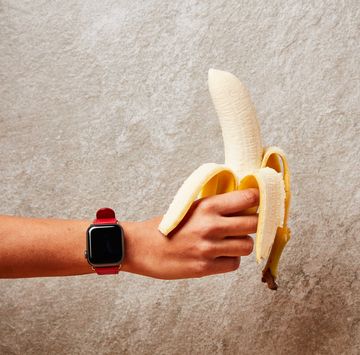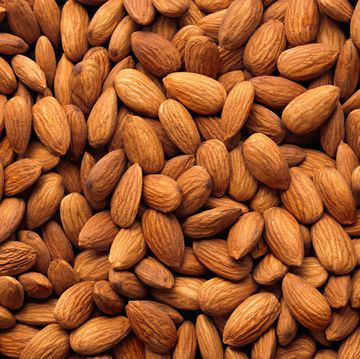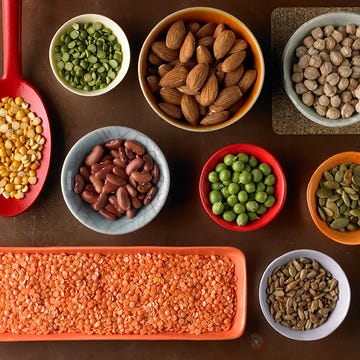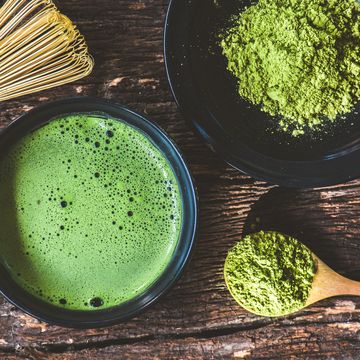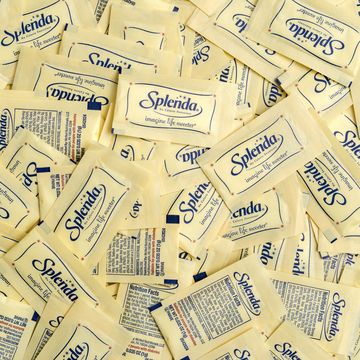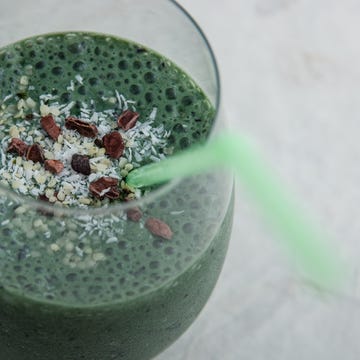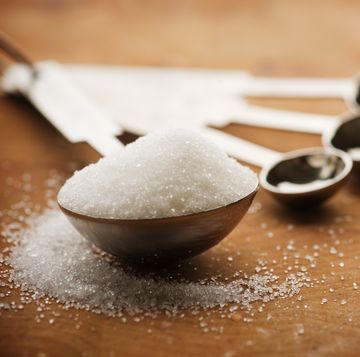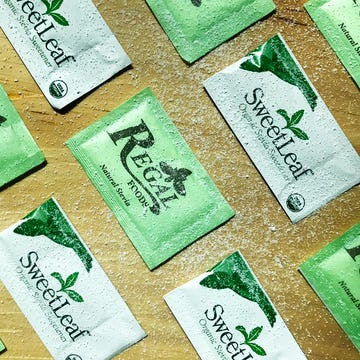If you’ve ever trained for a fall marathon, you likely know the brutality of summer training. Living in my hometown of Houston for 12 years now, I feel like I never truly acclimate to the extreme heat and humidity. I’ve learned to accept that I’m going to have to slow down on just about every run, whether it’s an easy day or a tempo workout. But in addition to backing off pace, it’s also important to keep your hydration in check to avoid issues like heat exhaustion, cramping, and gastrointestinal (GI) distress.
One concept that’s been gaining some buzz this summer: hyperhydration. This hydration tactic, is defined as excessive total-body water content with additional fluids, according to the National Athletic Trainers’ Association.
Meghann Featherstun, CSSD, a Kent, Ohio-based sports dietitian and owner of Featherstone Nutrition, describes hyperhydration as the goal of having your body hydrated to the point that it can hang on to extra fluid and sodium as you begin a longer run in hotter or more humid conditions.
“By beginning exercise in a hyperhydrated state, you will end your effort in a less dehydrated state than if you had begun exercising in a euhydrated state (or a normal state of hydration),” Antoine Jolicoeur Desroches, a professional triathlete and sports science researcher and Ph.D. student in Sainte-Anne-des-Lacs, Quebec, Canada, who has studied hyperhydration, tells Runner’s World. “The extra water content can be used to sweat, which helps you cool down and the extra plasma volume helps to dissipate heat by moving blood toward the skin and releasing heat. Therefore, a hyperhydration strategy could help slow down the increase in core body temperature, which is a limiting factor when exercising in warm conditions.”
Research shows that when we get dehydrated, our performance suffers. This can show up as a higher heart rate, higher rate of perceived exertion, or GI distress, Featherstun explains. So, “the thought is if we can hang on to some extra salt and some extra fluid, we’re going to sweat that out before we ever even dip into our own hydration stores,” and that will put off the symptoms and performance disadvantages of dehydration.
But how exactly do you hyperhydrate your body before a big workout? Turns out there are different methods to making it happen, and we break down these strategies after dialing in your individual needs.
First, Figure Out Your Sweat Rate and Fluid Needs
Before implementing a hyperhydration strategy into your routine, it’s key to nail down your individual hydration needs, which can depend on a variety of factors including the climate you live in, as well as your individual sweat rate, Featherstun says.
As a minimum baseline, the Institute of Medicine (IOM) advises that adequate total daily water intake (from fluids and water-containing foods) for men and women ages 19 to 50 years is approximately 3.7 liters (or 125 fluid ounces) and 2.7 liters (91 ounces) per day, respectively.
“However, [the minimum recommendation] doesn’t include what we’ve lost via sweat, which is why some people may find they’re struggling to stay hydrated and are having trouble training through the heat of the summers,” Featherstun says. “That’s why I will try to get my clients [who sweat a lot and train in the heat] to get a grasp of how much they sweat and how much they’re losing to know how to recoup that when they get back.”
To find out your sweat rate, you can perform a simple test: Weigh yourself before and after a run. For every pound you’ve lost, you’ve lost 16 ounces of sweat, she explains. So, if a 150-pound person goes out for an hour-long run and loses 2 pounds, they’d need 32 ounces of fluids to replenish that sweat loss, in addition to baseline fluid needs for the day.
Keep in mind you don’t always need to replace 100 percent of sweat loss, though it’s beneficial to get close, as those negative performance effects of dehydration kick in when you lose more than 2 to 3 percent of body weight in sweat.
3 Ways to Hyperhydrate
Once you’ve nailed down your individual baseline fluid needs, Featherstun typically recommends hyperhydrating 12 hours before a key run (i.e. a speed workout, long run, or race), which, if you’re doing a morning run, will mean the night before, after you eat dinner but before you go to bed.
You can also hyperhydrate 90 to 180 minutes before exercise, which is particularly effective for longer events where you risk the 2- to 3-percent dehydration and resulting performance dips.
While Featherstun’s recommendations vary client by client, she typically doesn’t recommend hyperhydrating for every single run.
“Unless they’re off-the-chart sweaty and salty, I typically recommend that people do it before long runs, [speed] workouts, and races just because we’re sweating more with the higher intensity, so it can really help us hit those paces a little better,” she says. For most people, this would mean hyperhydrating a max of three days per week if you do two fast runs and a long run.
You probably don’t need to hyperhydrate in cooler weather either, because your sweat rate will typically be much lower.
“For example, my sweat rate is about 40 ounces per hour in the summer and it’s five ounces in the cool fall marathon temperatures,” Featherstun says. “If you’re racing in much cooler weather, the only time you might want to do that is if it’s an ultra event where you’re going to be out there for a long time and you want to try to help offset those losses a little bit more.”
➥ How to Hyperhydrate With Fluids
While there are different ways to hyperhydrate, evidence suggests that at least 10 milliliters per kilogram of body weight of a high sodium drink (about 1,800 milligrams of sodium per liter) can be effective prior to exercise. This is equivalent to about 0.15 ounces per pound, so a 150-pound person would aim for about 22 to 23 ounces of a high-sodium drink.
Featherstun recommends choosing a high-sodium electrolyte product like Skratch Labs High-Sodium Hydration Drink Mix, which has more than 1,700 mg of sodium per serving, LMNT Electrolyte Drink Mix, which has 1,000 mg per serving, or The Right Stuff, which has nearly 1,800 mg per serving.
The reason it can be more effective to focus on increasing your electrolyte consumption along with water is that overconsumption of plain water can be dangerous and put you at risk for hyponatremia (a condition in which the body holds onto too much water and dilutes sodium in the blood).
“Because sweat is both water and sodium, or salt, you want to make sure that you’re replacing both of those things in the way that you need to so that you don’t end up diluting the sodium in our blood, which can be dangerous,” Featherstun says.
➥ How to Hyperhydrate With Food
While there are tons of options out there in terms of electrolyte solutions, you’ll see that there aren’t as many options that contain high enough sodium content to hyperhydrate effectively.
So if you find you don’t love any of the available high-sodium options, stick with your tried-and-true electrolyte solution (Nuun, regular Skratch Labs, whatever it is!) and work to add more sodium to your diet through food. According to Featherstun, you can do this by simply salting your food, eating snacks like salty pretzels, or adding soy sauce to rice the night before a long run, for example. You’ll want to have this extra sodium along with her typical recommendation of 20 to 24 ounces of extra fluid.
“If you’re concerned that you’re taking in too much sodium or possibly have a family history of hypertension and may be a bit scared to add more salt, that’s where you want to talk it through with a sports dietitian,” she says. “They can help you figure out what you need for your sweat rate and for your health concerns to just make sure that you’re nailing this and make sure you have that right balance there.”
➥ How to Hyperhydrate With Glycerol
Some research suggests that taking glycerol, a naturally occurring metabolite available in supplements in capsule or powder form, can help to delay fatigue caused by heat stress, in turn improving endurance and athletic performance, which is why it’s sometimes recommended for hyperhydration.
The idea is that glycerol works to increase and hang on to total body water content more effectively than simply drinking water alone. Greater fluid retention during exercise may help the body tolerate longer training time without increasing your heart rate, thus helping you beat that all-too-common slowdown that can come from pushing through those long marathon training runs, even when you’re keeping the pace easy. The catch is that some of the research on its effectiveness is mixed and most studies are older.
To hyperhydrate with glycerol, Desroches recommends 1 to 1.2 grams of glycerol per kilogram of body mass (or 2.2 to 2.6 grams per pound body mass), taken with 25 mL of fluid per kilogram of body mass (or 0.39 fluid ounces per pound). For a 150-pound person, this would be about 330 grams of glycerol with about 59 ounces of water.
“It is recommended to consume the fluids with glycerol 90 to 180 minutes before exercising in order to make sure that the water is well absorbed and that you have time to urinate the water that your body is not able to retain,” Desroches says.
While Desroches, who has studied the effects of using glycerol to aid in hydration and performance, believes glycerol is safe to use, he and Featherstun don’t recommend it as your first line of defense in place of hyperhydration with fluids and electrolytes. They both also recommend consulting with your healthcare provider or a registered dietitian before using it, especially if you have a history of high blood pressure or cardiovascular conditions, as hyperhydration increases plasma volume and water content, which can elevate blood pressure, he says.
“This strategy could be beneficial in some circumstances (such as when water availability is limited during a race) or for heavy sweaters and people who have difficulty drinking sufficiently when exercising,” Desroches adds. “A potential side effect is GI distress when consumed with large quantities of water, so athletes should make sure to first try it in training prior to trying it [before] a race.”

Emilia Benton is a Houston-based freelance writer and editor. In addition to Runner's World, she has contributed health, fitness and wellness content to Women's Health, SELF, Prevention, Healthline, and the Houston Chronicle, among other publications. She is also an 11-time marathoner, a USATF Level 1-certified running coach, and an avid traveler.
Dr. Namrita Brooke is a full-time endurance sport coach and sport nutritionist advising active individuals and amateurs to professional athletes. She is also an adjunct professor in the Department of Movement Sciences and Health at University of West Florida. Professionally, she also serves on the Board of Editors of the Sports Nutrition Care Manual and remains involved in nutrition and exercise-related research, student mentorship, and coach development. Namrita's personal athletic experience ranges from ultra-endurance mountain biking to off-road triathlon, cross-country mountain bike racing, gravel cycling, duathlon, cyclocross, running, and trail running. Her research background includes hydration and sports drink research, and the interaction of nutrition, physical activity, and the brain.



